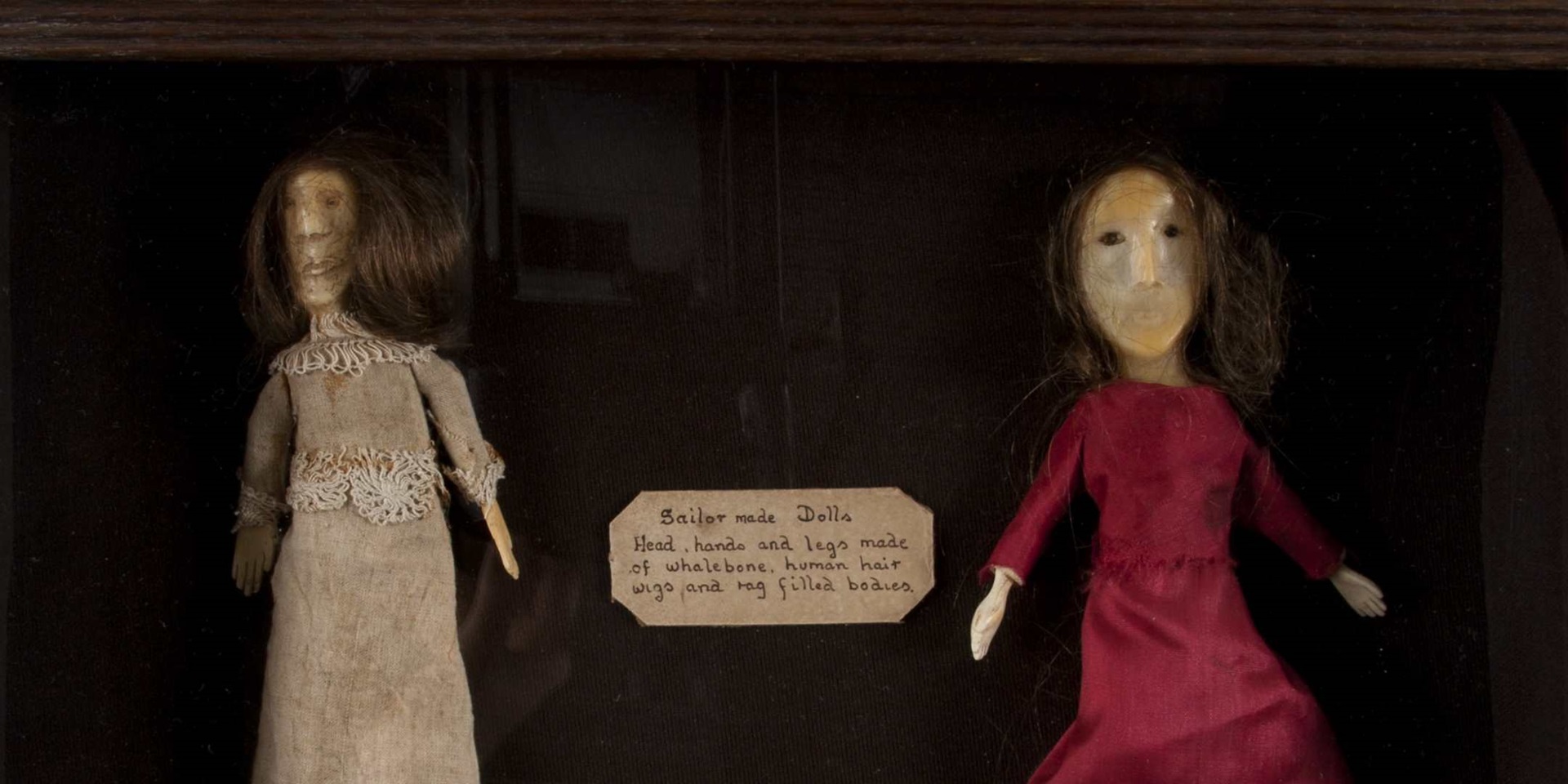
The other day, I was walking through the Museum’s stores, when a strange object caught my eye: a neatly framed pair of odd looking dolls with very puffed up hair, which reminded me of the very elaborate 1980s hairstyles like the one Joan Collins wore on her Dynasty days.

Whale bone and human hair dolls. ANMM collection 000018316
These dolls are part of the Museum’s scrimshaw collection. Scrimshaw are objects created by whalers from the by-product of the whale, such as bones, teeth, baleen and bones. It was first done by sailors working on whaling ships out of the coast of New England between 1745 and 1759 until the moratorium of commercial whaling in 1986.

Sperm whale tooth depicting a whaling scene. ANMM collection 00040479
The origin of the word is unknown, but some people think, it was derived from a Dutch nautical expression that meant to waste time. Indeed, scrimshaw did take quite a bit of time from the sailor’s idle hours as the surface had to be prepared first and designs had to be thought through. But time was something that the whalers had in abundance, as whaling trips could last several years and months could pass between any whale sightings.
The most common material used by the scrimshanders (person who makes scrimshaw) were the sperm whale teeth as they were plentiful and small enough to be kept inside the sailor’s sea chests. These bones or teeth were either engraved or scratched with a picture. Other scrimshaw objects would be carved out of the whale teeth. The engraved works depicted a broad range of subjects, the most common being, portraits of the ships were they worked, captains, wives or girlfriends back home and all kind of sea and mythical creatures.
These engravings were mostly done with pocket knives and sometimes, with a bit of luck, a discarded needle from the ship’s sail maker.The sailor would first make the surface of the teeth and bones smooth and even by removing the natural imperfections with pumice or shark’s skin. Once the surface was clean, the sailor would engrave the picture into the surface and rub a pigment into the cuts to make it visible. As ink wasn’t readily available in those days, this step was normally done with soot from the ship’s ovens, squid ink, lampblack, tobacco juice or gun powder mixed with whale oil.

Opera glasses encased with whale bone. ANMM collection 00032488
For the carved objects, the whale bones or teeth were cut and shaped into every day utensils such as needles, knives, ditty boxes, jars, buttons, pill boxes, cutlery, yarn winders, pie cutters, pins, pegs and many more. At the time, these objects were traditionally given to ship captains, relatives, loved ones as gifts or swapped between sailors. Today, both types of scrimshaw are highly sought after by collectors around the world.
Going back to the dolls, or Joan and Jackie Collins as I prefer to call them, were they made for a child or a loved one? Did the sailor use his own clothes or hair to make them? Those questions might never be answered, and for me, that is part of the magic of looking at them and letting your imagination go wild. The pair might not be the most elaborated pieces of scrimshaw in our collection, but they certainly provide an insight into the imagination of men who spent years out at sea.








